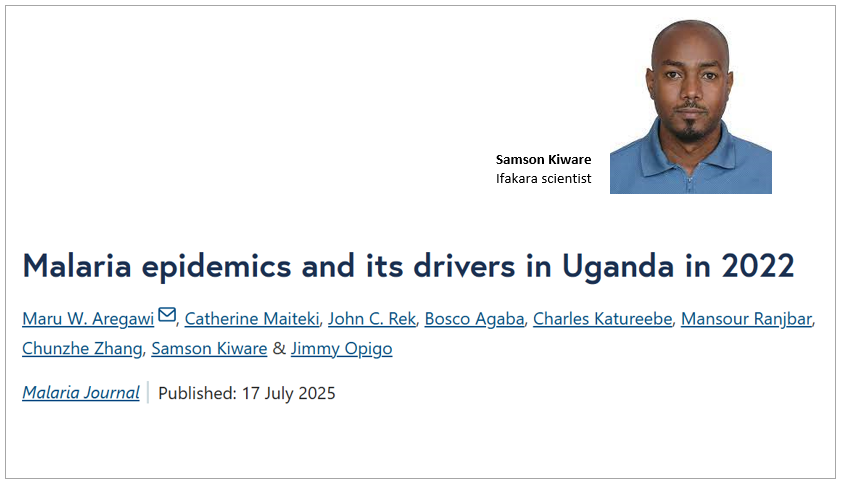
MALARIA: Why cases spiked in Tanzania’s neighbor in 2022, affecting millions

In early 2022, Tanzania’s neighbor – Uganda recorded an alarming rise in malaria cases, with new research revealing more than 3.3 million additional infections and nearly 150,000 excess hospital admissions compared to previous years. The findings, based on national health data analysis, highlight critical gaps in malaria control and call for stronger surveillance, sustainable funding, and better-targeted responses.
Published on Malaria Journal, the study shows that despite years of investment in prevention, the disease affected 64 out of Uganda’s 146 districts, with some regions experiencing malaria outbreaks throughout the year.
Widespread impact despite ongoing prevention efforts
Notably, several of the hardest-hit districts had previously benefitted from major malaria interventions, including Indoor Residual Spraying (IRS), Integrated Community Case Management (iCCM), and the extensive mass LLIN campaign of 2020/2021—raising significant concerns about the effectiveness and reliability of these strategies.
Collaborative research effort
The research was conducted collaboratively by the World Health Organization (WHO), the Uganda National Malaria Control Program (NMCP), and the Ifakara Health Institute. Key contributors included seasoned Ifakara scientist and co-last author Dr. Samson Kiware, Uganda’s NMCP Program Manager Dr. Jimmy Opigo, and the study’s lead author, Dr. Maru Aregawi from WHO’s Global Malaria Programme within the Universal Health Coverage/Communicable and Non-Communicable Diseases Division.
What the data reveals
Analyzing health records from Uganda’s District Health Information System (DHIS2) between 2017 and 2022, the researchers observed:
- A 31% increase in malaria cases in 2022 compared to the previous five years.
- Over 3 million excess confirmed outpatient cases
- Nearly 150,000 additional hospital admissions
- Some provinces (with bimodal rainfall patterns) were more prone to epidemics, while other (unimodal regions) had fewer epidemics but higher incidence rates.
Unpacking the causes: What went wrong?
Contrary to popular belief that more rain leads to more mosquitoes, the study ruled out rainfall patterns as a primary driver. While regions with bimodal rainfall patterns (two rainy seasons) were more prone, the correlation between rainfall patterns and the spike in cases was weak.
Instead, the authors point to programmatic issues such as, reduced effectiveness of insecticides, changes in mosquito behavior or species, and inconsistent coverage of IRS and iCCM. These factors, they argue, likely created ideal conditions for the epidemic.
Recommendations and the way forward
Malaria remains a leading cause of illness and death in Uganda, especially among children and pregnant women. The study’s findings call for urgent action, underlining the need for:
- Stronger surveillance systems to detect outbreaks early
- Tailored interventions for high-risk districts
- Sustainable funding to maintain and improve malaria control programs
"To prevent future epidemics and sustain malaria control progress, it is essential to strengthen targeted interventions in high-burden areas," researchers concluded. "A holistic approach - that reinforces healthcare systems, enhances vector control, improves access to services, and ensures sustainable funding - will be key to reducing malaria outbreaks and achieving long-term control in Uganda."
Read the publication here.
